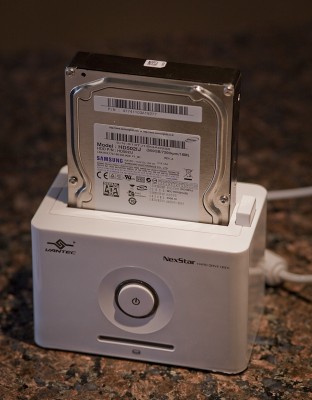How To Help Prevent Your WordPress Site From Breaking & Being Hacked
We are often asked about WordPress security, and while we are not security professionals, we are happy to share some advice. If you need specific advice for your website, please…
We are often asked about WordPress security, and while we are not security professionals, we are happy to share some advice. If you need specific advice for your website, please…
My clients come from the full spectrum of business types – everything from one and two person start ups to multi-national corporations. Each of these clients, of course, have unique needs and expectations, but I’ve come across one area that more and more clients are in need of. Digital Asset Management (DAM.) Most of the larger corporations have a system in place already, after all they’ve been dealing with this issue for time immemorial, and if there is anything large groups like to do, it’s set procedures and systems. However, many smaller clients are just beginning to realize that they need to keep better track of their images. And, if you’re working with startups, chances are they have no idea that this will become an issue for them later on. This is an opportunity for you to educate them and set them on a good path now. (more…)
Having had this happen once before you would think I would have learned my lesson.
A few years back, one of my external hard drives decided to take a sabbatical and never come back. Unfortunately it took a lot of information with it. Was the information vital to my business? Not really; but still it was part of the cyber attic pile of crap I decided to keep and never part with, it was so important that today, I have no clue what was on the drive and really don’t care. After that, I got into the regular routine of backing up, and backing up often. After a shoot, I usually pull the images off my card, put them on my HD, and then burn them to disc, and then and only after they were safely on disc, view them. Well let’s just say I got out of my routine…
During my initial review of the NexStar Hard Drive Dock I said (and it’s true) that I tested the dock using Windows XP (32-bit) and Vista (64-bit). That’s absolutely the case, but as I’ve used the device I discovered a problem on the Vista system I hadn’t seen in previous testing, (more…)

One of the most important aspects of any backup system is having a process, doing something consistently and uniformly enough that it’s easy to make sense of what’s going on, where information is, and so on. My backup process, while complete, has been a little ad hoc at times, and so as part of a move to simplify and organize my backup strategies I’m moving to keeping most of my backups on bare “internal” hard disks. While there are several ways of hooking bare drives externally to systems, recently I’ve become aware of a couple products that allow hard disks to be used almost like video game cartridges, plug in the drive, and go. Excited by the fact that this would simplify working with bare drives, I recently purchased the Vantec NexStar NST-D100SU 2.5-Inch/3.5-Inch SATA to USB 2.0 and eSATA Hard Drive Dock (White) and wanted to share my initial impressions and experiences with the product, which I’ll be calling “the Dock”, with apologies to my Apple readers.
The Dock connects your internal disk drive using either a USB or eSATA connection. NexStar provides not only USB and eSATA connectors but also a desktop bracket and cable that hooks to an internal SATA connector and provides an eSATA connector, as well as the obligatory power cables (each are actually labeled on the cable noting which type of cable it is, not entirely necessary but a nice touch for those of us who occasionally seem to generate cable nests). A simple instruction book is provided as well as a driver mini-CD/installation guide, while drivers are provided on the disk the disk should only be necessary for users of Windows 98/SE, or MacOS 8.6 or earlier, Windows ME/2K/XP/Vista, MacOS 9 (or later) and Linux 2.4.18 (or later) users should be able to plug and play according to their documentation. I tested the unit on an XP-based laptop via USB, and on a 64-bit Windows Vista system using eSATA. Vantec also makes a Vantec NexStar NST-D200SU 2.5-Inch/3.5-Inch SATA to USB 2.0/eSATA Dual Bay Hard Drive Dock (White) version of the Dock but I haven’t tested that myself. (more…)
Recently I had a disk drive failure, but I didn’t lose any data at all. In part that’s because that disk was “mirrored” to another disk using “RAID 1” or “mirroring”. In mirroring, software or hardware keeps two identical copies of a disk up-to-date as you go about your work, if one goes, you can replace the failed disk and (within a few hours) you can rebuild the mirror. It’s a good technology,and it allows you to continue to work when failure happens. Even so, I moved quickly to replace the disk and restore the mirror, despite having additional backups. (more…)
Anyone in this business for a while will have to contend with storage, archiving and workflow of digital images. The system I’ve been using for the past 10 years or so has evolved, and continues to do so. It’s based on invoice numbers. For the past four or so years I’ve been using blinkbid to generate invoices and estimates. I like this particular program because it’s simple and was written specifically for photographers. I know many photographers that use quickbooks, quicken or MS Money. Which business software to use is a decision that you should make individually or perhaps with help from your accountant. (more…)